Integrating an EV into your household energy management
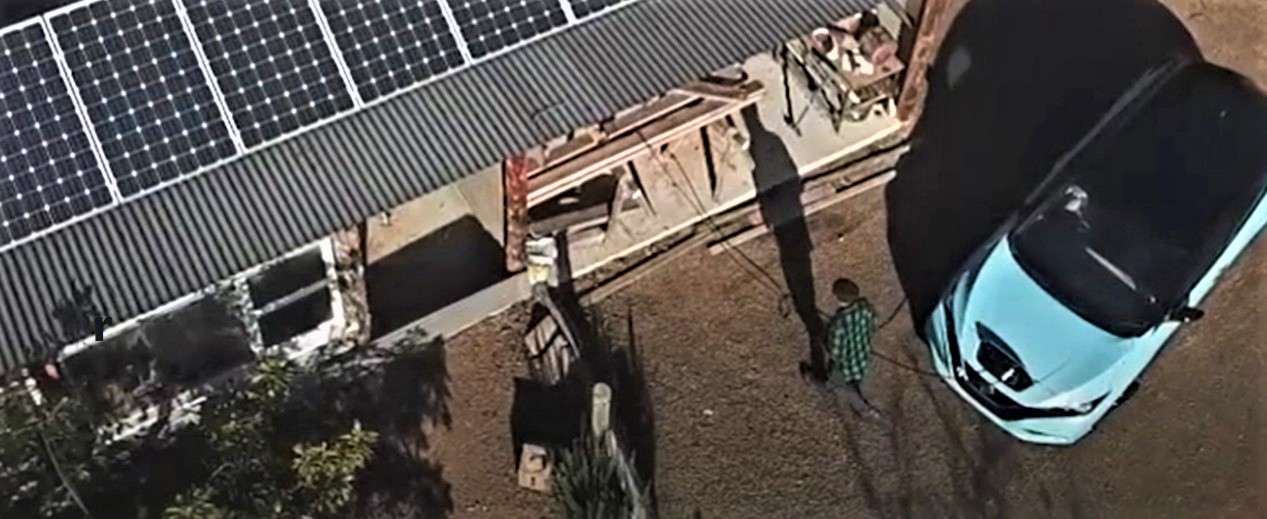
In this blog:
- An EV adds a new component to your home’s overall energy consumption.
- How to manage charging your car to avoid energy bill blow-out worries (even though it's still cheaper than buying petrol!).
- Ways to optimise your home-charging, from labour-intensive manual methods, to more intelligent technology.
- How to assess your home's a unique energy profile (consumption and lifestyle patterns / possible solar production and use) and factoring in your charging and car use strategy
- If managed well, you can minimise the financial and environmental costs of charging your EV, thereby maximising your satisfaction in owning one 😊
When you replace a petrol car with an electric vehicle (EV) you are replacing one fuel source (petrol/diesel) with another: electricity.
This is good for the planet because:
1) no emissions are produced from the vehicle,
2) a growing proportion of electricity is sourced from renewable energy. The National Electricity Market was made up of 36.8 per cent renewable energy in the 2022-2023 financial year; and,
3) if you have rooftop solar you can charge with guaranteed renewable energy
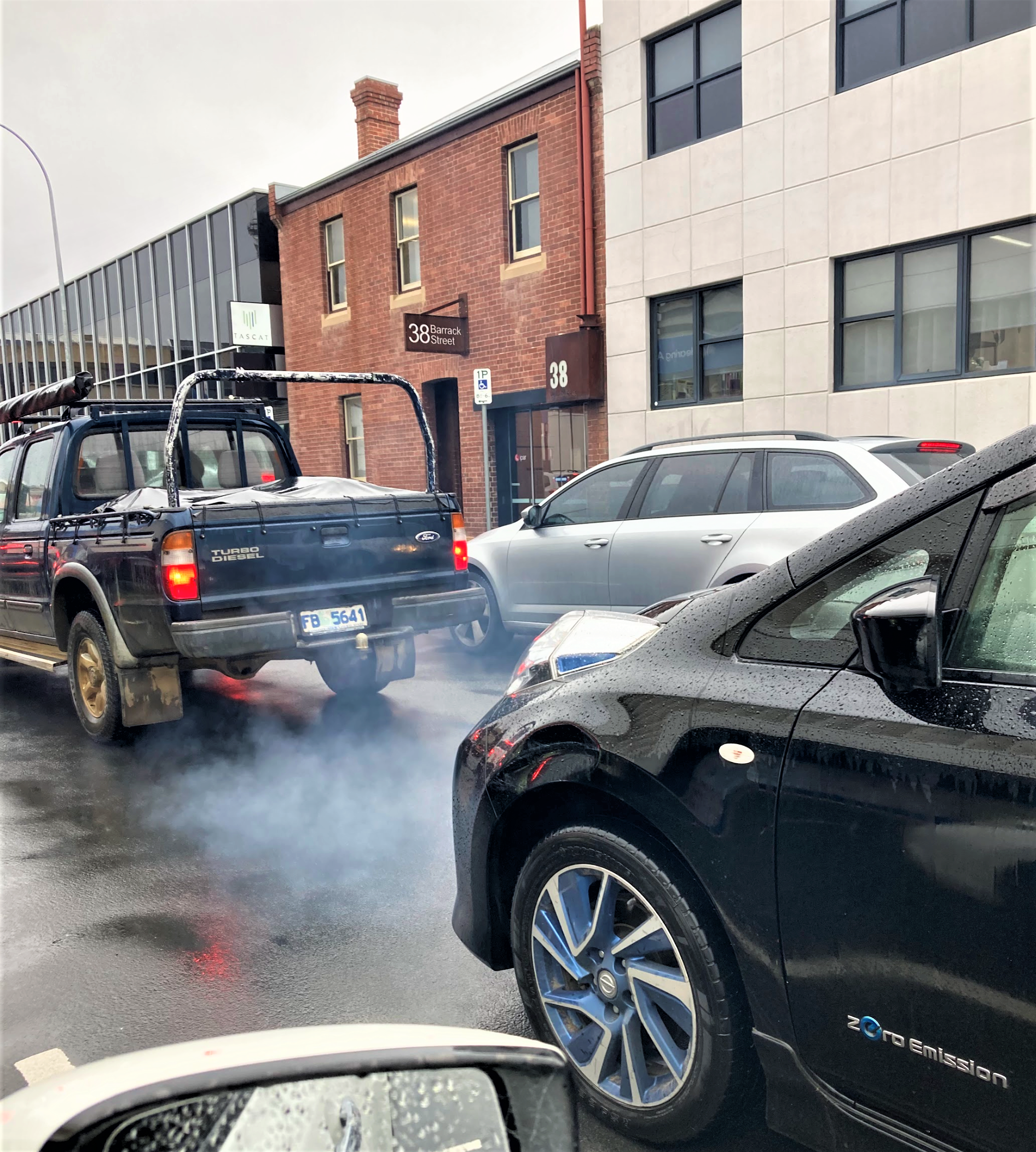
Practical things you can do to get the most out of home charging.
Charging your EV at home is practical, economical and environmentally friendly. It's important however to take steps to avoid any surprises on your energy bill (even though you've eliminated your petrol expenses). When you bring an EV to your home, it's like adding another electrical appliance, so it's well worth managing its impact on your energy consumption.
That said, the cost of charging your vehicle with electricity will be significantly lower than the cost of petrol to travel the same distances. By using an EV you are shifting fuel types, to one that is greener, and cheaper. Despite increases to the cost of electricity of late, it's still cheaper than petrol (e.g. around $2.00 per litre compared to 33c per litre equivalent using electricity).
To give you a real life example, to drive your Nissan Leaf for 200 kms on urban roads would use close to 22kWh of electricity (https://ev-database.org/car/
For example, a 2017 Nissan Leaf with a 40kWh battery requires 24kWh of energy to charge from 20% to 80%. That's around one and a half times the daily energy consumption of an average household. If you have a newer EV with a larger battery, such as a capacity of 60-75 kWh, the energy usage can be four to five times that of a three-person household.
Depending on how much you drive, this extra energy consumption may just be once a week or even once a day. To minimize the impact on your energy bills, here are some quick tips to help you get the best outcomes in EV charging at home, regardless of whether you have solar panels on your roof.
If you don’t have solar panels
First up, I want to make it abundantly clear that you do not need to have solar on your roof in order to own an EV. You will still be able to charge your EV from any power point in your house, and the cost of that electricity will be significantly less than the equivalent cost of petrol, as we saw in the earlier example. Using energy from the grid to charge your car is also still much better for the environment than using fossil fuels, especially with the ever increasing proportion of renewable energy in our grid. It does however make a difference on when you charge your EV - more below.
If you don't have solar panels, it's best to charge your car during the times when electricity is cheapest. For example, on the Essential Energy network, off-peak hours are between 10pm and 7am on weekdays, as well as all weekends. To take advantage of these lower rates, you'll need to switch to a 'Time of Use' (TOU) energy plan. Contact your energy retailer to make the switch if you haven't already, and inquire if they offer any EV energy plans that allow for cheaper daytime charging. If they don't, find out the specific off-peak times and request to switch to TOU.
Charging your EV at specific times of the day to optimise electricity tariffs doesn't have to be a hassle. Most EVs come with built-in timers on the dashboard display, allowing you to set the charging schedule. As long as your car is plugged in, it will charge during the designated times. Some models even have phone apps that enable remote start and stop of charging, as well as providing information on your battery's charge level. This is especially useful if you want to stop charging before reaching 100%. Good Car Co. recommends keeping your battery charge between 20% and 80% to maintain battery health.
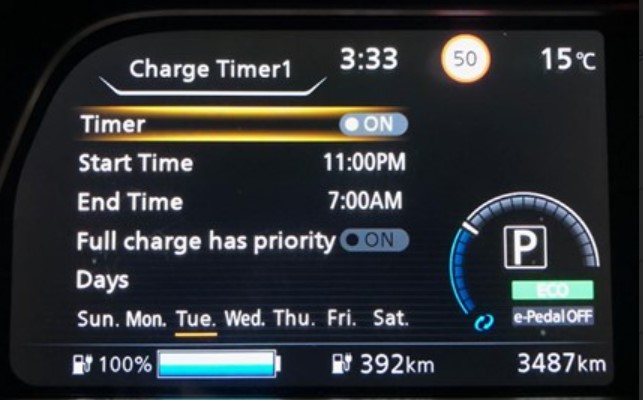
Leaf dashboard charging timer set to charge from 11.00pm to 7.00am, to take advantage of off peak energy tariff.
If you do have rooftop solar panels
If you have solar, take advantage of your EV and use any excess energy that would otherwise be sent back to the grid. This is known as 'load shifting'. It's similar to using your household appliances during the day to make the most of surplus solar energy that would otherwise only receive perhaps a minimal Feed in Tariff form your provider (much better to use the energy and save more).
If you want to track when you are charging your car with solar energy and with how much, the most effective way is through online solar monitoring. I will provide some examples later on. If you don't have access to online monitoring but still want to know how much solar power you are using to charge your car, you can check the display on your inverter, which shows the power output at a specific time. If that seems too complicated, you can simply aim to charge your car during peak solar hours, typically between 9am and 3pm. This increases the likelihood of using solar power, although there are no guarantees as the amount of available power depends on the capacity of your solar system and the energy consumption of other appliances. This is where solar monitoring becomes invaluable. It allows you to see available power at any given time (which would otherwise be exported to the grid) and view historical trends.
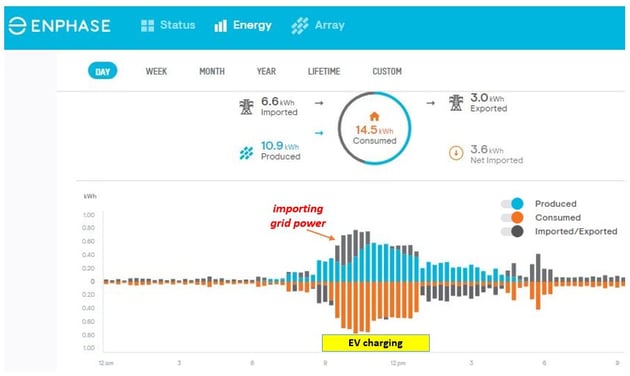
Here's an example of what you can observe from an online solar monitoring system. On this particular day, the car was charged from 9:30 in the morning until 1pm, taking advantage of the optimal solar production during that time. However, during the first couple of hours, we had to rely on some grid power due to other appliances running and the hindered production caused by cloudy weather. It's worth mentioning that the car was charging on a standard 10amp power point (2.2kW).
To help you make sense of this graph:
- The blue bars are the energy produced from the home’s solar PV
- The orange bars (below the line) are the energy being used by the home, including to charge the EV
- The grey bars show energy going to and from the grid. When it’s above the line it’s coming from the grid. Below the line is excess solar that being exported to the grid.
Smart chargers can be programmed to charge your EV exclusively using your surplus solar energy, within specific limits.
A more convenient and intelligent option for those who have solar power is to consider installing a smart charger. These advanced devices go beyond simply plugging your car into any regular power outlet. Smart chargers can be programmed to charge your EV exclusively using your surplus solar energy, within specific limits. This means that even on partially cloudy days or when you are using a lot of energy for other household appliances, the charger will only supply power to your EV's battery when there is at least 1kW of solar power available.
Considerations for choosing a home smart charger
One example of a smart charger brand is EVSE, with more options expected to enter the market soon. However, it is important to note that when it comes to the capacity of a wall charger, bigger is not always better if your goal is to maximize the use of renewable energy. While a fancy 7kW charger may seem appealing for faster charging, it can result in pulling power from the grid unless you have a 10+kW solar system. For those with a modest-sized solar system, even 10 amps may be excessive if the aim is to have a solar-powered car. For instance, in my own home where shade affects solar performance during winter, my system performs more like a 2kW system. When I had the use of an EV, I would intentionally reduce the charging speed to 8 amps to ensure that the demand stayed within the limits of my solar production at that time. Some charging cables offer different amp options, such as 6, 8, and 10 amps. While it may require more patience and diligence, taking this kind of action can lead to a highly satisfying outcome of driving a 100% solar-powered car.
The environmental benefits of charging your car during the day
In addition to the financial considerations, there are also environmental benefits to utilizing excess solar energy for charging your car instead of exporting it to the grid. This reduces grid transmission losses and helps reduce the overall demand for coal and gas-generated power when you rely on the grid at night. Even if you are with an environmentally conscious energy retailer or purchase GreenPower, the grid gets energy from various sources at any given time, and your retailer cannot control where those electrons come from. Therefore, charging your car during the day, even if it may cost slightly more, is a better option for reducing your environmental impact. This strategy can also apply to households without solar panels, as the grid is flooded with renewable energy during the day.
It's important to note that this advice may not apply to all households. The suitability of charging during the day depends on the capacity of your solar system, the weather conditions, and the amount of energy your house consumes throughout the day. If minimizing overall energy costs is a priority and you can't afford solar panels or a smart charger, charging during off-peak times may be a better option for you.
An EV-owners home energy case study
(Please note, if you don’t particularly like graphs, or any talk peppered with terms like ‘kilowatt-hours’, look away now! 😁 Skip to the conclusion!)
Let me showcase some excerpts of an analysis I conducted for a client's home energy consultation. Despite having a considerably large solar system and battery setup, this client was still receiving substantial energy bills. It's an excellent example of how charging an EV can result in unnecessary costs, even with a generously sized solar system. However, through careful investigation and adjustments, it is possible to mitigate this issue and ensure better integration of your EV into your home's overall energy management.
Now, let's dive into the graphs. The following are two days' worth of data from the client's solar monitoring.

To decipher this graphic:
- The green section are when the house is using solar power
- The orange sections are when their battery is providing power to the house
- The red sections show energy that is coming from the grid (imported electricity). In this example they needed energy from the grid to charge the car overnight, because there was no solar, and the home battery went flat. The following morning they were able to use solar energy again.
I honed in on these days because I could see from their energy profiles that for the past few months there were regularly days when they imported significantly more energy from the grid, even though for 90% of the time they were “net exporters”.
By examining the graph key, you'll understand what's happening here. In summary, the household relied on solar power until 2:30 pm, after which they supplemented it with battery discharging as their power demand increased. Just after 5 pm, they plugged in their EV to charge overnight. Why at this time? It could be because they used the car during the day, but they also took advantage of the off-peak energy tariffs that are available throughout the entire weekend (I noticed import spikes were always on weekends). Consequently, by 7pm, their battery was depleted, and they needed to start importing energy from the grid (indicated in red on the graph) to continue charging the car and powering other appliances like fridges. The car remained charging until 2 pm the following day, and even when the sun rose and the solar panels started producing energy (shown in green), it wasn't enough to meet the power demands of the car and other household appliances, possibly due to cloudy weather. Additionally, their battery couldn't charge as it usually does in the morning because the household's energy consumption fully utilised the solar power. This creates a vicious cycle that can extend into the subsequent evening since the battery has limited capacity to supply the household.
So, what could they have done differently?
The first solution I gave them was to change their charging strategy. With their substantial solar system I could see that they were exporting large amounts of energy to the grid for a large portion of each day, particularly when it was sunny. Looking at the trends of power available I calculated that they would be much better off charging the car during the day (when home), even on a weekday when there is a risk off paying ‘shoulder’ energy tariffs. Better yet, they could charge during the day on weekends (if home), when there is no risk of paying higher tariffs if they need to import grid power - because they have a TOU energy tariff with weekend off-peak.
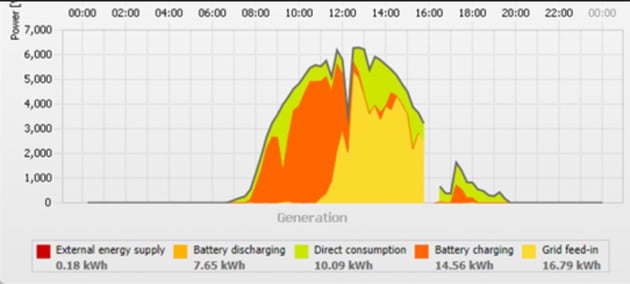
The client’s solar monitoring for a typical day. By 12 noon the battery is full (orange) and they start exporting significant abouts of energy (16.8 kWh) to the grid (in yellow). If they didn’t have a battery they would have exported nearly 32 kWh – perfect for EV charging!
The second solution would be to install a smart charger. Although it comes with a higher upfront cost, it eliminates the risk of paying higher rates for electricity due to factors like clouds or other household appliances consuming power. It also eliminates the need for guesswork or analysis when determining the optimal times to plug in the car for charging.
Take-Aways
About the Author
Seb Crangle is a professional home energy advisor, supporting households to lower their carbon footprint and energy costs by improving their home’s energy efficiency and through better energy management. He also works for the Good Car Company as a Test Drive Facilitator.
Website: www.homeenergyadvisor.com.au
